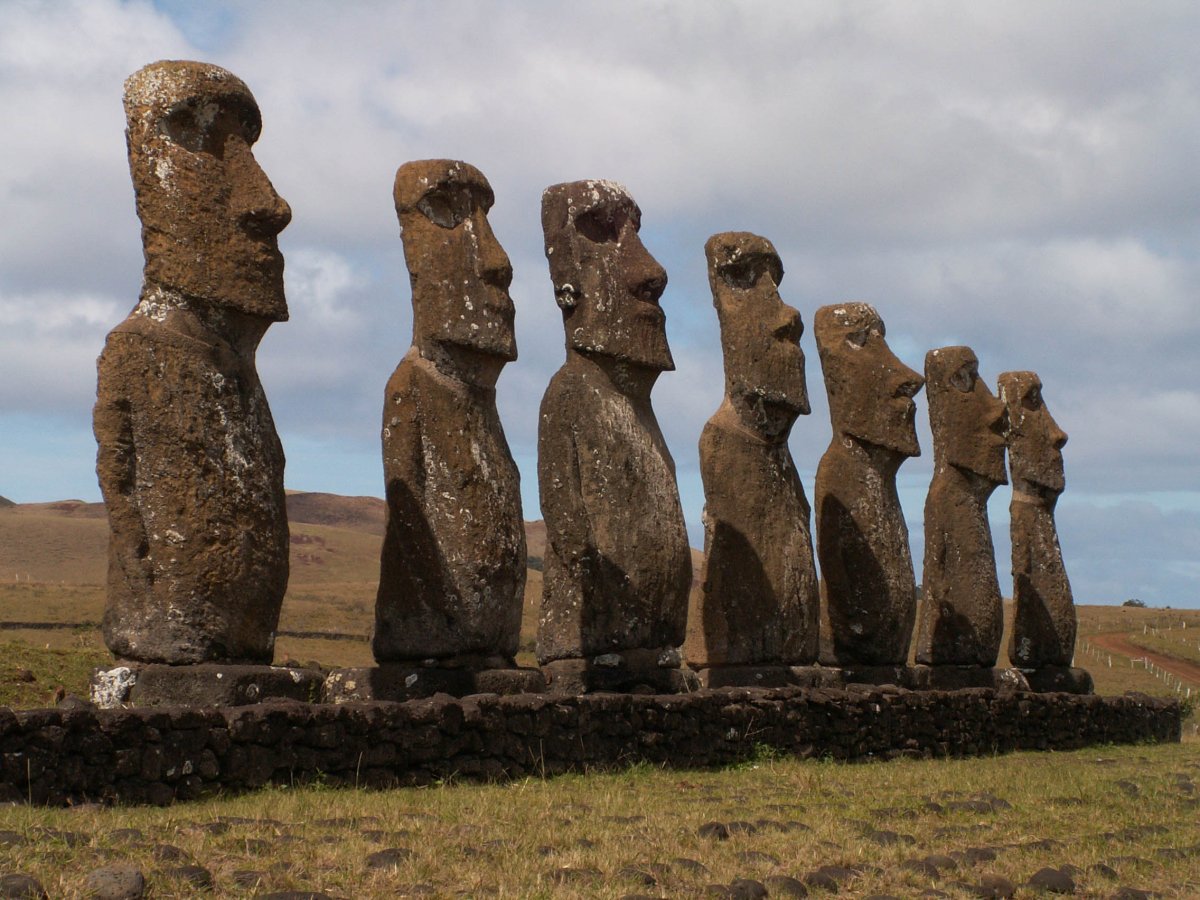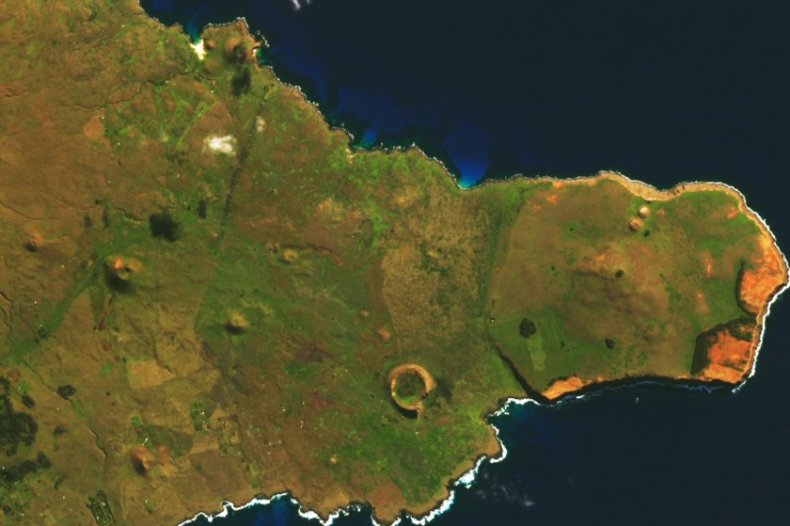A fire blazed across Easter Island on October 5, scorching the landscape and damaging many of the island's 1,000 moai statues.
The fire burned the land near Rano Raraku, an extinct volcanic crater, the burn marks of which can be seen as a large brown blight on the east side of the island in pictures taken by the Operational Land Imager-2 (OLI-2) on NASA's Landsat 9.
Easter Island, situated around 2,200 miles west of Chile, is infamous for its "heads," or moai statues, created by the Rapa Nui people. The small island is only 63.2 square miles in area, and has a population of 7,750, according to the 2017 census.

According to Edmundo Edwards, the director of the Rapanui Planetarium Foundation, the blaze was likely started by human action.
"Since the time when the island was a sheep ranch in the early 1900s it was customary to burn the dry grass so its new sprouts would provide good feed for sheep and cattle. This was customarily done around June-July just before the winter rains and when there was a heavy wind so the fire would sweep across the land and thus the grass rootlets would be saved and sprout with the first rain," he told Newsweek.
"So still the ranchers continue to set fire to the grass although this is now forbidden when cattle feed becomes scarce. This is no doubt the origins of this fire, but no one claims to have caused it."
Approximately 80 of the island's sacred moai statues were affected by the blaze and were damaged by the heat of the fire.



The island's approximately 1,000 moai statues were built between 1400 and 1650 A.D., in honor of deceased chieftains.
According to NASA Earth Observatory, the Rapa Nui people harvested a volcanic rock made of consolidated ash called lapilli tuff from the Rano Raraku crater, which they then used to carve the moai statues. The structure of this tuff is part of the reason that the statues were so badly damaged by the fire.
"As none of these statues located in Rano Raraku has been treated to control the erosion which affects the surface of the statues due to a natural process which affects tuff, as it gradually erodes with age and looses the smooth finishing left by its carvers becoming in time grainy and coarse which gradually falls off," Edwards said.
"The exposed statue erodes and crumbles while what is buried remains intact. With fire, this process intensifies so it is probable that they might lose a part of their outer surface, but we cannot generalize because the tuff from which they are quarried changes depending on the composition of the layers that were formed during the eruption, and some layers are more compact and harder than others.
"So, this natural process which affects each statue is different, and some will erode faster than others, and the fire has certainly affected them in a different way depending on its heat and intensity and the qualities of the tuff."
According to Edwards, a team of experts from UNESCO is due to arrive on the island to make an evaluation of the damage.
"What I remember from the past fires is that their soot covered surface will disappear with rainfall and as mentioned no doubt erosion will intensify and degrade some off its fine features. Let's hope that they can be treated in time to harden it and control the natural process affecting the tuff from which they are made," Edwards said.
Uncommon Knowledge
Newsweek is committed to challenging conventional wisdom and finding connections in the search for common ground.
Newsweek is committed to challenging conventional wisdom and finding connections in the search for common ground.
About the writer
Jess Thomson is a Newsweek Science Reporter based in London UK. Her focus is reporting on science, technology and healthcare. ... Read more
To read how Newsweek uses AI as a newsroom tool, Click here.








